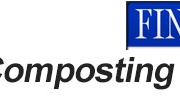(Toronto Sun, August 25, 1999)
Look up the word ‘obsolete’ in the dictionary and you’ll probably find a picture of your computer.
In this fast-forward age of constant change, it sometimes seems nothing becomes worthless faster than your humble desktop computer.
A fortune today, a boat anchor tomorrow, you might say. The Freedman family in North York couldn’t be happier about that sad fact of life.
To them, hi-tech junk is cash.
The Freedmans, dad Max, sons Adam, Eli, David and various uncles are the modern-day version of the scrap yard.
Hardly surprising since Grandpa Freedman ran an auto wreckers in his time in Detroit.
“It’s called recycling today, but it’s the same business,” shrugs Eli. “Our father started up a computer recycling business in Mexico just after the 1985 Mexico City earthquake,” Adam says. “There were lots of mainframe computers that were damaged and he built a business breaking them down for salvage.”
In 1993, Max moved back to Toronto to reunite with the family and after looking around decided the market was right for a hi-tech recycling business.
Since then Hi Tech Recycling (www.hitechrecycling.com) has expanded into three industrial units on Champagne Dr. in Downsview with about 6,000 square feet.
Despite its name, it’s a labour-intensive, strictly analog venture – one of a handful of operations in the GTA mining the recycling of defunct hi-tech equipment.
“Companies contract with us. They pay us, or in some cases we pay them, to take their equipment. We bring it here and start separating the components,” Adam says.
Everything from desktops to mainframes, cell phones to modems, networking equipment to switches pass through the loading dock to be dismantled.
Plastic cases are sorted into 34 different categories; metal chassis frames are similarly sorted, hard drives to a separate bin, wiring to another, cables and plugs to their areas.
“The plastic can be recycled, the metal smelted down and reused and the circuit boards, about 24,000 pounds a month, are smelted and semi-precious and base metals like copper and aluminum recovered,” Adam says. “The monitors go to a joint venture company where they are crushed and the components, like the glass and metal, are separated out and recovered. That’s the really expensive part of the process.”
Their location is a magnet for hobbyists who know they can always find an obscure part or motor.
What can be reused is sent to operations like Bell Pioneers’ Computers For Schools program or Reboot, a similar venture which fixes up older computers for non-profit organizations and charities.
They in turn send their “junk-junk” to Hi Tech.
“They do a great job”, says Lorne Scheelar, of Computers For Schools. “This stuff shouldn’t be ending up in landfill. About 30% of what we get in is pure junk that really can’t be upgraded to a useful machine for a school.”
And that’s the point, Eli Says. “We’re trying to educate people,” he says. “We’re trying top stop sending this stuff to a landfill because it doesn’t break down.”
And as more and more computers reach the end of their life-cycles there’s also the environmental issue to be considered. Main boards often contain traces of toxic chemicals like mercury and chromium, while monitors can contain lead.
Individually they’re not much of an environmental threat but the numbers soon add up. One U.S. study suggests that by 2002 some 63.3 million computers a year will become obsolete in America alone.
Consumers with machines collecting dust are also welcome to drop them off free of charge at the company’s loading dock during business hours Adam says.






